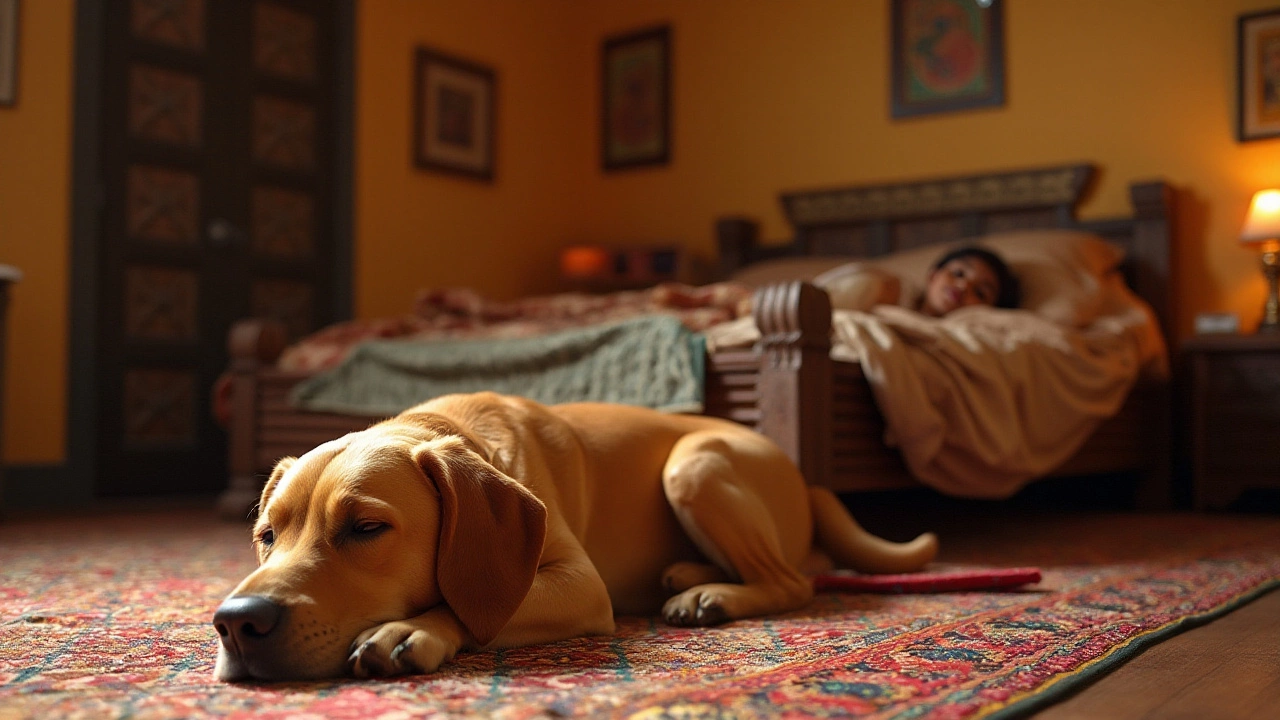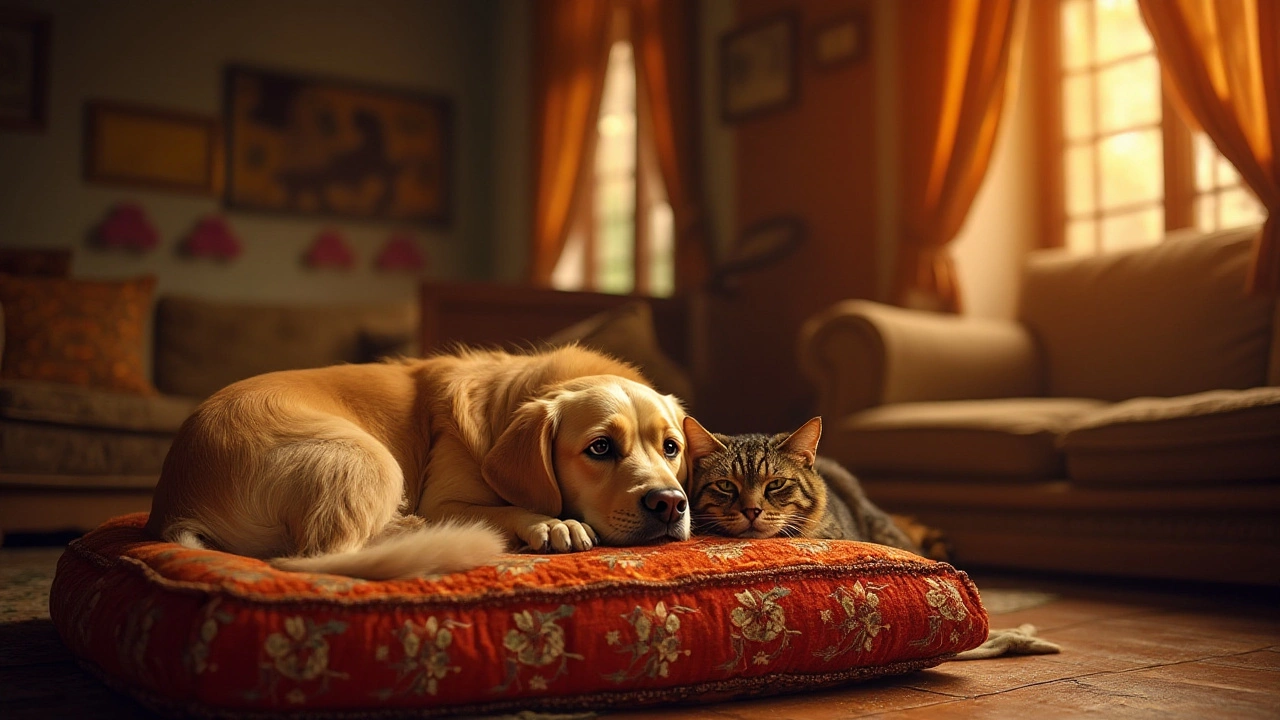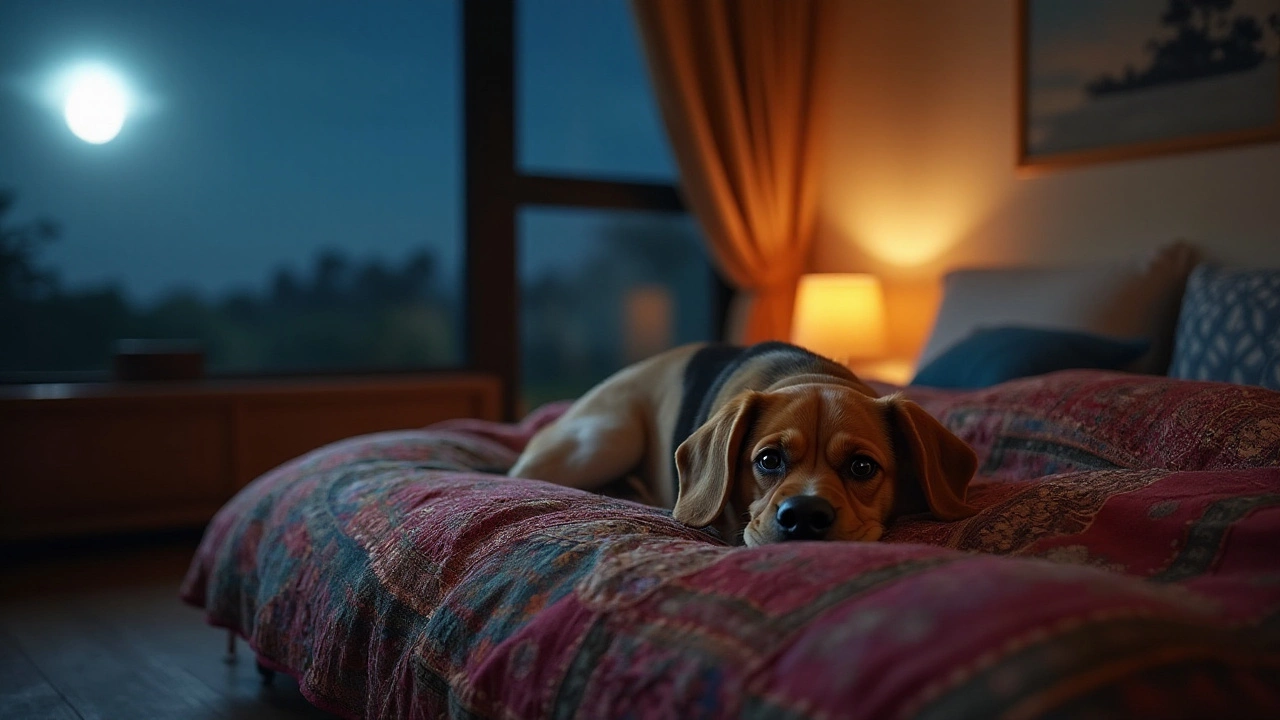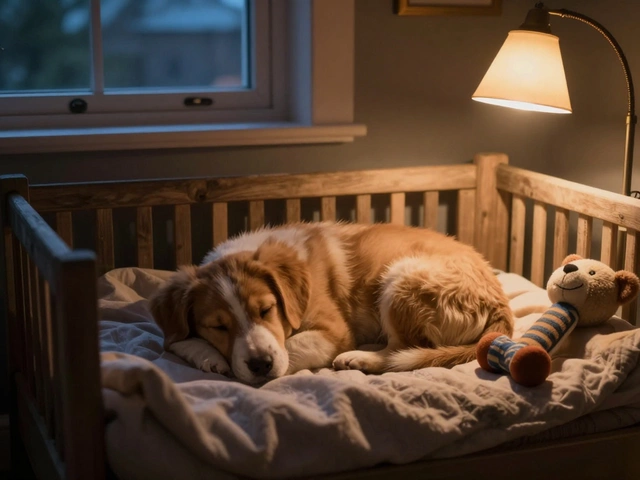
Delving into the mystery of a dog's sleep preference reveals insights as unique as each dog's wagging tail. Do dogs relish the solitude of their own bed, or do they long for the warmth of human companionship during their slumber? Though often guided by instinct and personality, a dog's sleeping choice can offer clues about its comfort and sense of security.
Exploring the science behind canine comfort reveals that the ideal sleep environment can vary greatly. Just like humans, a dog's preference can be influenced by a number of factors including age, breed, and individual temperament. This means that finding the perfect sleeping arrangement for your pup might require a bit of observation and understanding of their needs.
As a dog owner, ensuring your furry friend gets the best night’s sleep could mean providing a cozy bed in a quiet corner, or it might involve a shared sleeping space that fosters closeness. So, whether your canine companion is a cuddler or a lone dreamer, there are ways to make bedtime both comfortable and beneficial for them.
- Understanding Canine Sleep Preferences
- The Science Behind Dog Beds
- Factors Influencing Solitary Sleep
- Tips for a Restful Night’s Sleep
Understanding Canine Sleep Preferences
When it comes to understanding why dogs sleep the way they do, it helps to take a closer look at their ancestral roots. Dogs, as descendants of wolves, have inherited certain traits and instincts, and sleeping habits are among those. In the wild, wolves often slept as a pack for safety, warmth, and bonding. It’s notable that this pack mentality still influences many modern dogs. However, not all dogs crave constant companionship during their sleep. Some dogs might find tranquility in their very own space, owning a piece of territory where they’re undisturbed.
Surprisingly, even within the same household, you might observe differing sleep preferences among multiple dogs. Factors such as breed, age, and past experiences play significant roles in shaping these habits. For instance, smaller breeds, which generally face more threats in the wild, might lean towards seeking comfort beside their human companions, while larger breeds might luxuriate in staking out their own spacious corner. Breed-specific traits can affect sleeping preferences too. Terriers, known for their independent streak, might prefer a standalone space.
Age adds another layer to the narrative. Puppies, much like human children, may demand more cuddles and closeness. They could seek warmth and reassurance, often curling up close to a trusted caregiver. Older dogs, on the other hand, sometimes cherish solitude, either due to mobility troubles or simply a need for gentle quietude in their golden years. Observing these dynamics unfolds a great deal about why dog sleeping habits vary significantly.
Despite the common preference for sleeping alongside humans, providing a suitable dog bed is crucial. It allows a safe haven for those moments when a dog desires respite from the day's bustling activities. According to animal behaviorist Dr. Sarah Wilson, offering varied resting spots fosters a sense of autonomy and comfort, echoing the idea of humans having choices about where we rest.
"A dog’s ability to choose its sleeping place empowers them with a sense of security and contentment," Dr. Wilson says.
To delve even deeper, scientific studies suggest that dogs, like humans, experience REM sleep. This makes the environment in which they sleep all the more crucial, as proper rest can impact their emotional and physical health. It underscores why understanding your dog’s specific sleep needs and preferences is not just a matter of comfort but also one of well-being.
Ultimately, the more we learn about our furry friends, the better equipped we are to provide them with the sanctuary they deserve—whether it’s a plush dog bed tucked away in a quiet corner or a partners-in-dreaming setup in our own beds.

The Science Behind Dog Beds
Have you ever noticed how your dog circles a few times before plopping down for a nap? It turns out, this behavior is deeply embedded in their instincts, much like their preference for dog bed preferences. The comfort of a dog's sleeping environment directly influences their quality of rest, which in turn affects their daily activities. A well-designed bed not only serves as a sleeping space but also as a retreat where your dog feels safe and secure. This is important because a dog that rests well is typically more energetic and healthier than one that does not.
"The right dog bed can have a significant impact on a dog’s health and overall energy levels," explains Dr. Jane Adams, a veterinary sleep specialist. "A well-rested dog is a happy dog."
It's fascinating how different breeds and sizes require different types of beds. For instance, large breeds, thanks to their sheer size and weight, need beds with supportive memory foam that can cushion their joints. On the other hand, smaller breeds might enjoy plush, enclosed beds that mimic a den-like atmosphere, giving them a sense of security. Orthopedic beds, particularly for aging dogs or those with arthritis, can provide relief and enhance dog sleeping habits by distributing their body weight evenly, which reduces pressure on their joints.
Let's delve into a bit of research. According to a study conducted by the Sleep Research Society, dogs that sleep on appropriately designed beds are 35% more likely to display calm and relaxed behavior during the day. This is a significant finding as it underscores the importance of not only how dogs sleep but where they sleep. A proper understanding of a dog’s anatomy is crucial in designing beds that cater to their specific needs, ensuring that all support zones are adequately addressed.
Temperature plays a role too. Many dog beds now come with cooling or heating features, catering to a canine's canine comfort needs depending on the climate. These features ensure that whether it's a blazing summer or a chilly winter, your dog remains comfortable. It's particularly beneficial for breeds with heavy fur that might overheat easily or those with thin fur prone to getting cold. Moreover, the material of the bed cover, whether breathable cotton or water-resistant microfiber, can make a significant difference in comfort and maintenance.
In designing the perfect dog bed, it's not solely about aesthetics. The height of the bed, the material used, and even the placement within the home all matter. Dogs, being creatures of habit, tend to choose a bed that offers a view of their surroundings and isn't in a high-traffic area, allowing them to rest undisturbed. From donut-shaped beds that snugly envelop tiny terriers to mattresses that stretch as far as a Great Dane, the variety available today caters to every imaginable preference, ensuring your pup has their dream sleeping arrangement.
In essence, there's more depth to a dog's sleep than a mere place to crash. Whether you lean towards traditional berths or cutting-edge designs, understanding the nuances of dogs sleep alone or in company helps in selecting a restful haven that promises sweet dreams.

Factors Influencing Solitary Sleep
For many dog owners, understanding why their pet might prefer to sleep alone can be intriguing yet puzzling. A multitude of factors come into play when it comes to a dog's desire for solitary slumber. Primarily, a dog's age can significantly affect its sleeping habits. Puppies and older dogs often require more sleep and a quieter atmosphere, making a solitary bed very appealing. Their development or age-induced needs for undisturbed rest often guide them to seek out quiet retreats.
Moreover, a dog’s breed also plays a vital role in its sleeping preferences. For instance, independent breeds like Siberian Huskies or Shiba Inus may display a natural inclination towards sleeping alone due to their traditional roles as solitary workers in harsh environments. Conversely, dogs bred to work closely with humans, such as Labrador Retrievers, often crave the proximity of their owners even during rest.
“Dogs have wildly different preferences often informed by genetic predispositions and individual experiences,” explains Dr. Emily King, a well-known veterinarian and canine behavior specialist. “A dog’s comfort zone is shaped significantly by its upbringing and environment.”
Temperament and personality also comprise key factors influencing solitary sleep. Some dogs naturally possess a more independent disposition and enjoy their space, much like how introverted humans relish alone time to recharge. These dogs appreciate a private corner where they can unwind without interruption. Stress and anxiety levels are noteworthy considerations too; dogs experiencing anxiety might find solace in a secluded sleeping area where they feel safe and secure from potential stressors.
The household environment itself can greatly impact a dog's choice to sleep alone. In bustling households filled with noise and activity, dogs might seek out solitude as a means to escape the commotion. Conversely, a quieter home might prompt some dogs to stay close to their humans, finding comfort in shared spaces. Trials with different sleeping arrangements can reveal a dog's true comfort zones, helping owners create the perfect dog sleeping habitat.
Certainly, understanding these influencing elements can foster a deeper connection between you and your dog, ensuring their needs are met most effectively. By being observant and responsive, owners can adapt their homes to provide the best sleeping environment, contributing to their furry companion’s comfort and health.

Tips for a Restful Night’s Sleep
Ensuring your dog enjoys a restful night's sleep is key to their happiness and health. Dogs, just like humans, thrive on routine and comfort when it comes to sleeping. Creating a cozy environment is the first step toward peaceful slumber. Start by selecting a bed that suites their size and sleeping style. If your dog loves to curl up, a bed with raised edges offers a sense of security. Larger breeds that like to stretch out might prefer a flat, cushioned mat. A good bed should support your dog's joints and provide cushion against the hard ground, especially for older dogs or breeds prone to joint issues.
Incorporate a consistent bedtime routine which might include a short walk to burn off excess energy or a few minutes of gentle petting to wind down. Limiting food and water intake a couple of hours before bedtime helps avoid waking for nocturnal bathroom trips. A cool, quiet environment, free from distractions like loud noises or bright lights, can immensely improve the quality of your dog’s sleep. If you share your bedroom with a noisy aquarium or nightlight—consider their placement in relation to the dog bed. Room temperature is also an essential factor; some dogs are more sensitive to heat or cold depending on their coat thickness, age, and health.
Recognize and respect your dog's preference for solitary or social sleeping. If your dog thrives on companionship, allow them to sleep near you or another pet, but if they opt for solitude, it's crucial they have a dedicated space where they feel safe and undisturbed. Experts like Dr. Katherine Houpt, a professor of animal behavior, suggest,
"Understanding your dog's sleeping habits can prevent behavioural issues and ensure better rest for both you and your pet."Establishing boundaries and consistency is vital. Praise and reward your dog for choosing to sleep in their spot, using positive reinforcement to encourage the desired behavior.
Speaking of reinforcing comfort, the state of the bedding should never be neglected. Regularly clean your dog’s bedding to avoid fleas, ticks, and unpleasant odors. An additional touch could be using fabric softeners designed for sensitive skin, keeping in mind any allergies your pet might have. Sometimes, when anxiety or restlessness takes hold, a dog might benefit from a weighted blanket or a calming pet diffuser that can ease tension. Trials in various settings have shown that these accessories can reduce stress-related issues, leading to a more restful night. A practical tip is to keep a throwable blanket nearby for chilly nights or for dogs that seek a covering sensation.
To track the improvement of your dog’s rest quality, you could maintain a sleep diary that notes any irregularities or disturbances. As much as 57% of dog owners observed improved daytime behavior once they optimized their pet’s sleeping environment. Making a few smart choices and observing your dog's cues can significantly improve the quality of sleep for your four-legged friend, contributing to their overall well-being and happiness.





